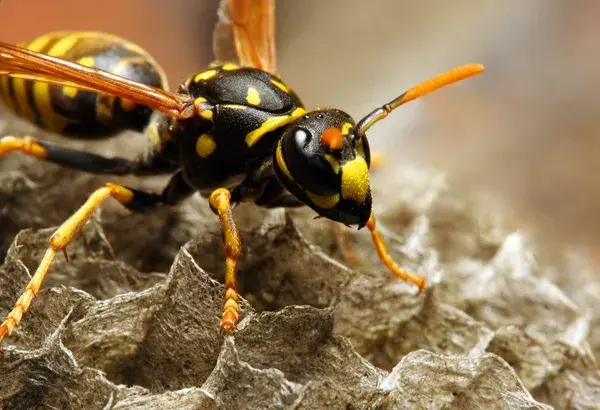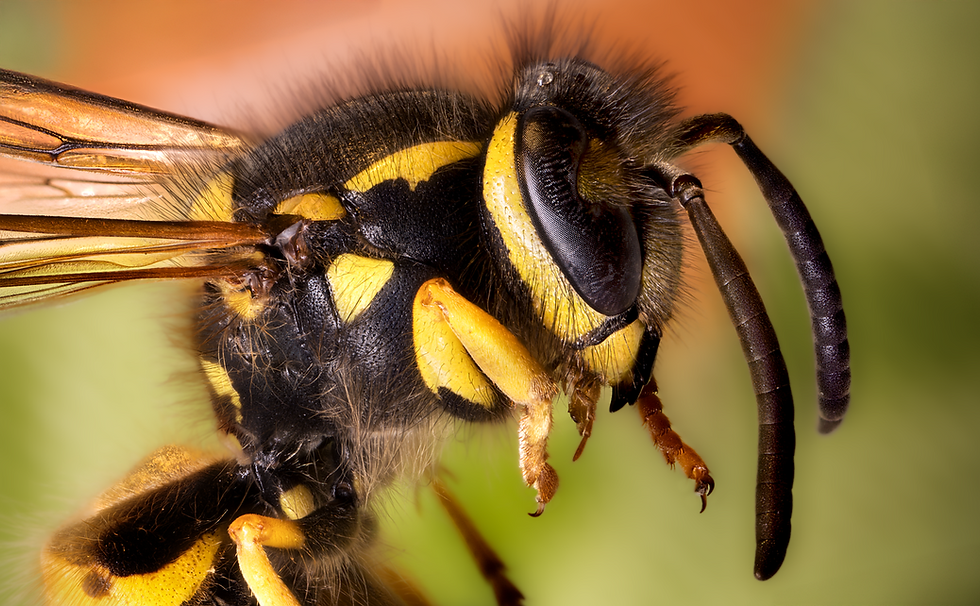When Yellowjackets Take Over Your Property
- Eli Fitch
- Aug 18
- 4 min read

Key Points Summary:
• Yellowjackets become aggressive defenders near their nests
• Late summer brings peak yellowjacket activity and danger
• Professional removal prevents painful stings and property damage
Yellowjackets aren't just another nuisance insect buzzing around your barbecue. These aggressive wasps pose a serious threat to your family's safety and your property's integrity. Unlike their more docile bee cousins, yellowjackets are territorial predators that will attack without hesitation when they feel threatened.
Understanding the real danger these wasps present can mean the difference between a peaceful outdoor season and a costly emergency room visit. Ohio homeowners face peak yellowjacket activity from late summer through early fall, making this the most critical time to address any wasp problems on your property.
Why Yellowjackets Are More Dangerous Than You Think
Yellowjackets possess a unique ability that makes them particularly hazardous - they can sting multiple times without dying. While honeybees die after one sting, yellowjackets retain their stinger and can attack repeatedly. A single yellowjacket can deliver numerous painful stings in just seconds.
Their venom contains compounds that trigger severe allergic reactions in sensitive individuals. According to the American College of Allergy, Asthma & Immunology, insect sting allergies affect up to 5% of the population, with yellowjacket stings being among the most common triggers for anaphylactic shock.
Where Yellowjackets Build Their Hidden Nests
Ground nests represent the most dangerous yellowjacket threat because they're nearly invisible until accidentally disturbed. These underground colonies can house thousands of wasps just inches below your lawn's surface. Homeowners often discover these nests the hard way - while mowing, gardening, or walking across their yard.
Wall voids and attic spaces provide perfect nesting conditions with protection from weather and predators. Yellowjackets enter through tiny gaps around siding, windows, or roof lines, then build massive paper nests inside your home's structure. These hidden colonies can grow undisturbed for months, reaching dangerous population levels before homeowners notice any activity.
Warning Signs You Have a Yellowjacket Problem
Increased wasp activity around trash cans, pet food, and outdoor dining areas signals a nearby colony. Yellowjackets are scavengers that travel significant distances from their nest to find protein and sugar sources. If you notice persistent wasp presence around these areas, a nest is likely within a few hundred yards of your property.
Buzzing sounds coming from walls, eaves, or underground areas indicate an active nest inside your property's structure. This continuous humming grows louder throughout the day as worker wasps return to the colony. Any unusual insect sounds from your home's interior spaces require immediate professional investigation.
Why Late Summer Makes Yellowjackets Extremely Aggressive

Colony populations peak in August and September, with mature nests housing between 1,000 to 5,000 aggressive wasps. During this period, worker yellowjackets become increasingly territorial as they defend their expanding colony. The University of California Agriculture and Natural Resources reports that late-season yellowjacket colonies produce the highest number of defensive attacks on humans.
Food scarcity drives yellowjackets to become more aggressive scavengers during late summer months. As natural food sources decline, these wasps become desperate for protein and sugar, making them more likely to invade human spaces and defend their territory violently against any perceived threats.
The Real Cost of Ignoring a Yellowjacket Infestation
Emergency room visits from multiple yellowjacket stings can cost thousands of dollars, especially when anaphylactic reactions require immediate medical intervention. The National Pest Management Association estimates that severe allergic reactions to insect stings result in over 500,000 emergency room visits annually, with average treatment costs exceeding $3,000 per incident.
Structural damage occurs when yellowjacket nests expand inside walls and foundations over multiple seasons. These paper nests can grow to the size of basketballs, weakening wooden structures and creating moisture problems that lead to rot and mold. Professional structural repairs from wasp damage often exceed $5,000 in severe cases.
DIY Yellowjacket Removal Mistakes That Make Things Worse
Partial nest destruction causes surviving yellowjackets to become extremely aggressive and relocate to other areas of your property. Homeowners who spray visible portions of a nest often kill only a fraction of the colony, leaving hundreds of angry wasps to establish new nesting sites nearby. These traumatized survivors become more defensive and likely to attack on sight.
Store-bought aerosol sprays rarely penetrate deep enough to reach entire yellowjacket colonies. Most consumer products only eliminate wasps at the nest entrance, while the majority of the colony remains safely inside. The Environmental Protection Agency warns that improper pesticide application can disperse colonies rather than eliminate them.
How Professional Yellowjacket Removal Works
Licensed technicians use specialized equipment to eliminate entire yellowjacket colonies safely and effectively. Professional-grade pesticides reach deep into nest cavities, ensuring complete colony elimination. Ohio Pest Control's trained experts identify all entry points and treat the entire nest structure, preventing survivors from reestablishing elsewhere on your property.
Follow-up treatments prevent new yellowjacket colonies from forming in the same location during subsequent seasons. Professional services include nest removal, entry point sealing, and monitoring to ensure long-term protection. Our technicians also provide property assessments to identify and eliminate conditions that attract future yellowjacket activity.
Preventing Future Yellowjacket Problems on Your Property
Proper waste management significantly reduces food sources that attract yellowjackets to your property. Keep garbage cans tightly sealed, clean up fallen fruit from trees, and remove pet food from outdoor areas. The National Wildlife Federation recommends maintaining clean outdoor spaces to discourage wasp activity around your home.
Sealing entry points blocks yellowjacket access to potential nesting sites inside your home's structure. Regular inspection and maintenance of siding, window frames, and roof lines prevents wasps from establishing interior colonies. Professional pest control services can identify vulnerable areas and recommend appropriate exclusion measures for your specific property.
Yellowjacket infestations require immediate professional attention to protect your family and property. Don't risk dangerous DIY removal attempts or allow colonies to grow unchecked. Contact Ohio Pest Control at (740) 354-5995 for safe, effective yellowjacket elimination and prevention services throughout Ohio, West Virginia, and Kentucky.




A genuine Yellowstone Jacket is more than outerwear; it's a symbol of the toughness and resilience that defines the show. Each character's jacket tells its own story. Find yours at the Western Jacket store.